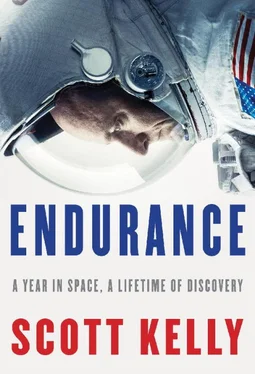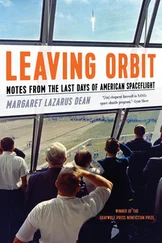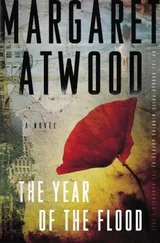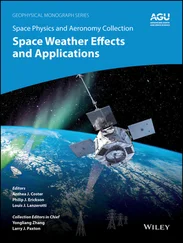Later in January we see through the second major botanical project on board the station. Growing lettuce back in August was relatively easy—we set up nutrient “pillows” under the grow light in the European module, watered the plants according to schedule, and watched the leaves sprout as expected for an easy harvest. Now I am growing flowering plants, zinnias, which we expect to be more difficult because the plants are more delicate and less forgiving. The sequence was set up this way on purpose—we will use what we learned from growing an easier, less demanding species to aid us in growing something more finicky. The zinnias prove to be even more difficult than we expected. They often look unhealthy, and I suspect that our communication lag between space and the ground is to blame. I take pictures of the plants and send them to scientists on Earth, who, after looking them over and consulting among themselves, send me instructions about what to do—usually “water them” or “don’t water them.” But the lag in communications means that by the time I get the instructions things have gone too far in one direction or the other. By the time I’m told not to water them, the little plants are often waterlogged and growing mold on their leaves and roots. By the time the instruction to water them reaches me, they are dehydrated and on the brink of dying. It’s frustrating to be growing a living thing up here and to watch it struggle, not to be able to take proper care of it. At one point I post a picture of one of the zinnias on social media and get back criticism of my botany skills in return. “You’re no Mark Watney,” quips one smart-ass commenter, making reference to the stranded astronaut in The Martian. Now it’s personal.
I tell the payload ops director that I want to take over deciding when to water the flowers. That might seem like a small decision, but for NASA it’s huge. Having to touch the plants and the medium they grow in with my bare hands would be a major change in protocol. The ground seems terrified that if I touch the plants and they have mold on them, the spores could infect me. The initial reaction I get is skeptical, but I’m convinced that the flowers are going to die unless I’m allowed to take care of them myself, as a gardener on Earth would do, and it’s frustrating to see all the effort and expense that went into designing and launching this experiment going to waste. Some involved with this decision doubt I will check on the plants every day, because that will take a lot more of my time and attention than simply following directions. But I finally get my way.
It’s hard to describe the feeling of watching the flowers come back from the brink of death. I’ve carried memories of the flowers I saw in the botanical gardens with my grandparents when I was a kid, and maybe because those weekends with them were a peaceful respite, I associate flowers with my grandmother and her loving manner. I think about Laurel’s violets that I kept in my office after her death. Once the zinnias are my personal project, it becomes incredibly important to me that they do well. I check on them as often as I can. One Friday I bring some of them down to the Russian segment and attach them to the table as a centerpiece.
“Scott,” Sergey says, a puzzled look on his face. “Why are you growing these flowers?”
“They’re zinnias,” I clarify.
“Why are you growing these zinnias?”
I explain that we are working toward being able to grow tomatoes one day, that this is one of the experiments we are doing to further our knowledge for long-term spaceflight. If a crew is going to go to Mars, they will want fresh food and won’t have access to resupply like we have on the space station. If we can grow lettuce, maybe we can grow zinnias. If we can grow zinnias, maybe we can grow tomatoes, and tomatoes would provide real nutritional value to Mars travelers.
Sergey shakes his head. “Growing tomatoes is a waste. If you want to grow something you can eat, you should grow potatoes. You can live on potatoes.” (And make vodka.) The practical and simple Russian perspective has merit.
When I post the first picture of the healthy zinnias on social media, there is a huge explosion of interest—6 million impressions. It’s gratifying to see people respond with enthusiasm to something I’ve come to care about. And it reinforces my thinking that people are interested in what’s going on in space if it’s presented to them in ways they can relate to.
To me, the success with the zinnias is a great example of how crew members will have to be able to work autonomously if we ever go to Mars. I care about the flowers much more than I was expecting to, partly because I’ve been missing the beauty and fragility of living things, but most likely because I was called out on Twitter for my botany skills and had something to prove.
—
IN LATE JANUARY, I gorilla up for the first time, stuffing my head and body into the plasticky-smelling gorilla suit. I’ve decided what Space Gorilla’s first adventure will be: I hide in Tim Kopra’s crew quarters and wait for him to come along. When he opens the door, I pop out and scare the shit out of him. Then I float down to the Russian segment and show the cosmonauts, who all go nuts laughing. Space Gorilla is already spreading joy.
I decide it will be funny to float in front of the camera where mission control can see me in the suit without warning them first. On a calm Tuesday afternoon when not much is going on, I make my move. I put on the suit and then drift in front of the camera in the U.S. lab until I know I can be seen on the screen. Amiko sees it on NASA TV, but no one on the ground says anything. It’s a letdown.
I’ve been thinking about ways to use Space Gorilla to engage with kids—if he could grab their attention and make them laugh, maybe they would be interested enough to listen to me talk about space and the value of science, technology, engineering, and math. Tim Peake agrees to help me by costarring in a short video in which he is shown unpacking some cargo, only to find a stowaway gorilla that chases him up and down the U.S. lab to the Benny Hill theme song, “Yakety Sax.” The video goes viral and brings new attention to what we are doing on the space station.
—
ON JANUARY 28, I lead a moment of silence for the crew of the space shuttle Challenger, which was lost thirty years ago today. The two Tims and I gather in the U.S. lab, where I say a few words honoring the memory of the crew and mentioning that their spirit lives on in our current achievements in space. I bow my head for a moment, and as I do I can’t help but remember the cold morning when my college roommate George and I watched the orbiter blow up over and over on his tiny TV. Thirty years, a lifetime ago. I couldn’t have imagined where I am now. I remember George asking me whether I still wanted to go to space and wanting to go more than ever.
A few days later, one of my Russian colleagues floats over to the U.S. segment to show me that his tooth has popped out. It’s a crown attached to an implant, like a little metal peg in the front of his mouth. There is no way to get home without the tooth-jarring Soyuz landing, so he is understandably afraid that the unsecured tooth will be knocked down his throat, or lost, on reentry; he also doesn’t want to land without it, because we are photographed so much immediately on return. I get out the dental kit, thoroughly dry both the tooth and the post with gauze, mix up some dental cement, and glue the tooth back into his mouth. My colleague gives me a broad smile, satisfied. A commander’s work is never done.
—
ONE SUNDAY MORNING, I float over to the Russian segment and greet the cosmonauts while they are having breakfast.
Читать дальше












